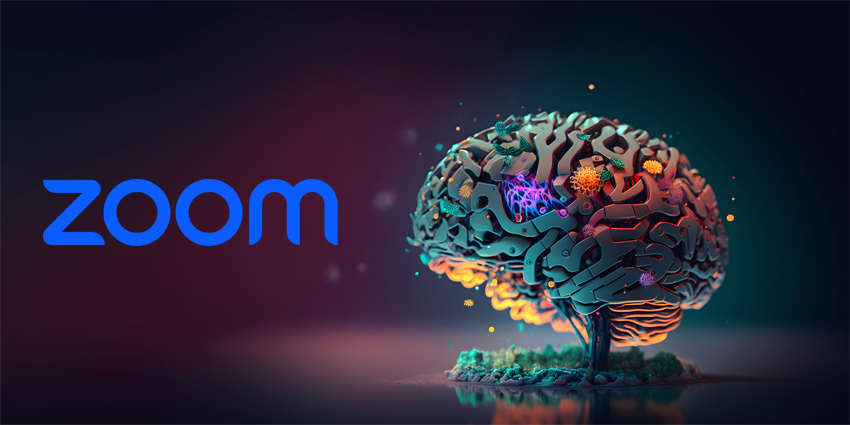Less than ten years ago, Google pioneered the customer service AI market with the launch of the Google Contact Center AI Suite.
That suite featured groundbreaking conversational AI, agent assist, and conversational intelligence tools that many CCaaS providers used to augment their platforms.
But as the pace of innovation around AI and automation accelerated, customers wanted to adopt new AI capabilities from Google more quickly, without waiting for third-party developers to add these features into their product roadmaps months or even years later. In other words, they wanted an end-to-end platform from Google.
Answering their call, Google released a fully-fledged CCaaS solution: Contact Center AI Platform.
Immediately, it captured attention for its mobile-first design, security features, and – most notably – native AI.
Indeed, AI is baked into the heart of the platform, and thanks to its cloud-native foundation, Google has continued adding cutting-edge AI capabilities throughout 2023.
But, before diving deep into these new-wave features, consider what makes the Google CCaaS platform “truly AI-centric”?
The answer is two-fold: its CRM-centric design, which unifies customer data across the business, and the core AI models that take advantage of this advanced architecture.
AI Success Depends on Quality Data Inputs, Google Recognizes This
No matter how advanced the AI model, it’s only as good as the data companies feed it. The “garbage in = garbage out” principle applies.
For most CCaaS vendors, CRM integrations rely on data replication and synchronization at 30–60-minute intervals, which impacts both the timeliness of reporting and the completeness of data upon which AI can learn and operate.
Yet, Google is not building on these old integrations. Instead, it introduced a CCaaS platform with a CRM-centric design that enables powerful, real-time bidirectional data flows between the platforms.
As such, contact center AI models can operate on more complete, structured organizational data. Moreover, the contact center can funnel more of the insights it generates – via Google’s conversational intelligence tools – back through to the CRM solution.
Of course, this drives new customer insight into the broader business. But, most crucially, it shows how Google both uses data sets to improve AI and AI to improve data sets. That powerful cycle sets the contact center up for long-term success with AI.
The AI Models at the Heart of the Google Contact Center AI Platform
During the launch of its Contact Center AI Platform last year, Google isolated three cornerstone AI innovations that would benefit from its superior data flow. These are:
1. CCAI Insights – A conversational intelligence tool that lifts insights from all conversations on the platform – whether conducted by a live or virtual agent. Those insights cover contact reasons, customer sentiment, and possible compliance risks – amongst others.
2. Agent Assist – This offers agents step-by-step support during live calls, lifting insights from the knowledge base and CRM while even auto-generating ready-to-send customer responses across digital channels. (More on this later).
3. Virtual Agents – Dialogflow is Google’s Magic Quadrant leading conversational AI platform and sits inside the CCAI platform. There, it enables conversational self-service across voice and digital channels, alongside smooth handoffs to live agents for more complex queries.
Yet, there are many more AI models that contact centers can choose to leverage. For instance, its predictive routing engine is AI- and ML-based, channeling contacts to particular agents – based on employee data and CRM information – to maximize specific outcomes.
With this innovation, contact centers can evolve from rules-driven, skills-based routing while improving central customer experience metrics.
Such advanced tooling is a critical reason why, as Amit Kumar, CCaaS Product Manager at Google recently confirmed:
“Many of the biggest CCaaS players use our technology for everything AI-related.”
As such, the tech giant has a headstart over many providers in terms of new feature releases and plotting out its product roadmap.
Finally, as Google has expanded its platform – most recently releasing workforce engagement management tools – it continues to infuse AI into the foundations.
Augmenting These Models with Generative AI to Unlock New Possibilities
The importance of a cloud-native foundation for CCaaS cannot be understated. It allows vendors to drop in new features on the fly and augment existing innovations much faster.
Vendors like Google, with such a base, will win in a world where AI innovation continues to drive forward at unprecedented speeds.
Just consider how quickly Google added generative AI (GenAI) to its platform after the advent of large language models (LLMs), like Bard, ChatGPT, and Claude.
Already, it has several GenAI innovations, including a Knowledge Assist feature that builds upon its existing Agent Assist models to provide reps with answers in real-time, so they don’t need to search for them.
Then, there is an auto-summarization feature that generates a post-interaction contact summary to speed up an agent’s after call work (ACW) and cut contact times.
Many vendors have produced rival solutions. Yet, Google differentiates its offering from several others because it can summarize a conversation before a handoff – not just at the end of the interaction. As such, it enables a smooth omnichannel customer experience.
Finally, it has augmented its CCAI Insights native conversational intelligence solution with GenAI.
Here, a GenAI bot takes customer intent data and recommends where contact centers can add additional knowledge content, make process fixes, and apply conversational AI.
Excited by these possibilities, Baker Johnson, Chief Marketing Officer for UJET, stated:
“Customer experience and contact centers are the leading use cases for Generative AI investments and transformation. This is as foundational as the shift to web and mobile – which still remains a challenge for on-prem and legacy cloud platforms that were originally designed around landline phones.”
“Google Cloud’s ability to consolidate infrastructure and solutions, combined with the billions they’ve invested in these newer Generative and Conversational AI capabilities, makes them a serious contender in the space.”
To fulfill this vast potential, Google has teamed up with UJET to build this solution, leveraging its vast contact center expertise.
Since then, this relationship has expanded to increase Google’s footprint within the crowded CCaaS space.
Implementing the AI-Centric Contact Center with UJET
In partnering with UJET – a vendor known for its ability to handle large-scale, complex CCaaS migrations – Google quickly gained credibility within the market.
Now, the vendors have started to partner on various enterprise contact center transformations for massive and well-known organizations, with one large retailer improving its call containment rates by as much as 185 percent.
Businesses looking to achieve similar successes may delve deeper into such success stories and the Google Contact Center AI platform by visiting: https://ujet.cx/googlecontactcenter







